An Illustrated Guide to Client Communication
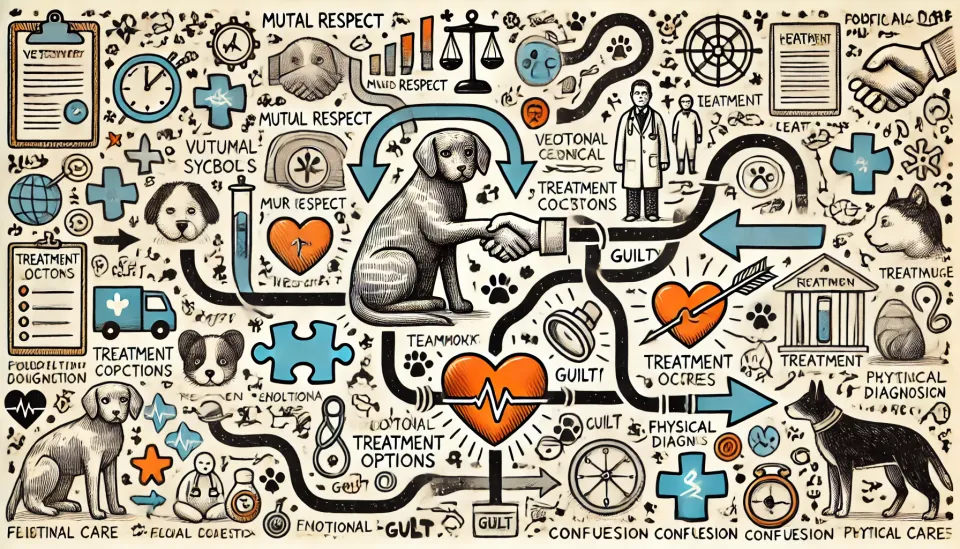
The vast majority of the time it takes to become a veterinarian is spent studying the complex interactions between anatomy, physiology, genetics and the environment as they relate to animal health.
We're a science-based profession, but we're mid-nerd spectrum: we want pretty hard science but not necessarily quantum physics. Most of us still have unresolved issues with the Krebs cycle, the complicated biochemical pathway that oxidizes something called α-ketoglutarate into succinyl-CoWhatever. We're sure it's important but we can't remember why.
In the back of our minds, some of us must have known that this seemingly incomprehensible metabolic pathway was one of the foundations of animal health. Even the ones that bragged about the ridiculousness of memorizing such information would have to confess that it probably was massively consequential.
Which reminds me of this chart:

Except that's not L-Malate and NAD+ transmorphing into each other. No, no, no, this chaotic monstrosity is reproduced from a highly-cited scientific paper on another sometimes-distasteful-but-ultimate-critically-important aspect of veterinary medicine: client communication.
Here's a paradox for you: one of the most important aspects of the enjoyment of being a veterinarian receives barely 1-2% of the curriculum hours in any given school. And this is a huge problem. Client communication, or dysfunctional client communication is one of the things that drives people away from the profession!
There's definitely a growing recognition that "we not so good" at talking to people. And concerned scientists are fighting the good fight of locating and cataloging the problem while identifying the best solutions. But they are doing it science-y, which is to say thoroughly and rigorously but ultimately in a kinda boring way. If you want to get someone to do something they know will benefit them but is uncomfortable (like simultaneously eating broccoli while flossing and meditating), you have to make it fun.
Forget the spoonful, you're gonna need a heaping pitcher of sugar and other addictive chemicals in order to make client communication attractive to veterinarians.
Well, I don't want to induce any type-II diabetes, so I'm just going to offer some cartoons. They may not be the most palatable way to take this information. But I think they might be more–ahem, entertaining than an intricate flowchart. And I do think each one captures an important component of how client communication can go right, or wrong. After all, incongruity is the source of both miscommunication and humor.
So here are science-based insights on how to talk to pet owners. By knowing how they see and what they expect in the world, you can be better prepared to deal with the one species most veterinarians dislike. Consider incorporating these into your next client conversation, for your own sake.
Pet Owners Expect Information Presented Up Front
Firstly, it's important to acknowledge that client expectations are the source of any and all difficulties in communication. And because Millenials are now the biggest pet-owning demographic, you're gonna have to learn to deal with some aggressively entitled people.
And one thing about us whiny Millenials is that we are riotously impatient. We want our s–t NOW! The old, Normal Rockwell days of a lobby full of patiently waiting clients is over. If you have, as the medical professional, have information relevant to the health of our pet, we expect you to give it to us– right away.
If at all possible, try to stay in contact with your clients about their animal's health.
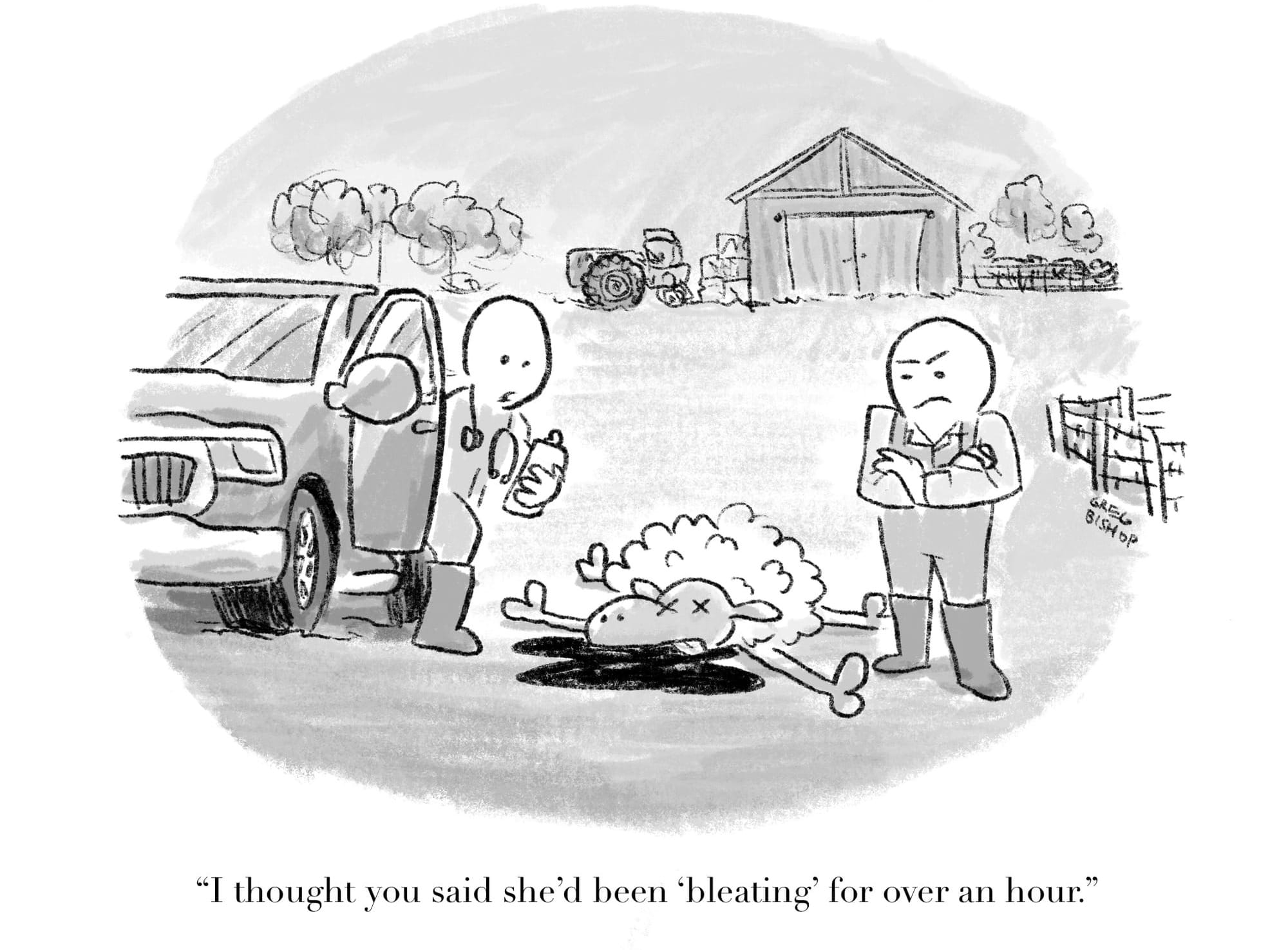
Pet Owners Expect Information in Various Forms
Who has two thumbs and doesn't remember anything during appointments? Most people!
It's great to have a prepared lecture for each and every medical problem, but unless you're Tony Frikkin Robbins, you probably get boring within the first minute. Why not keep your bloviating brief and follow up with a handout, pamphlet, or link to a website? You can even knock out a customized email now with an AI language model.
I mean, the least you can do is write it all over the wall...
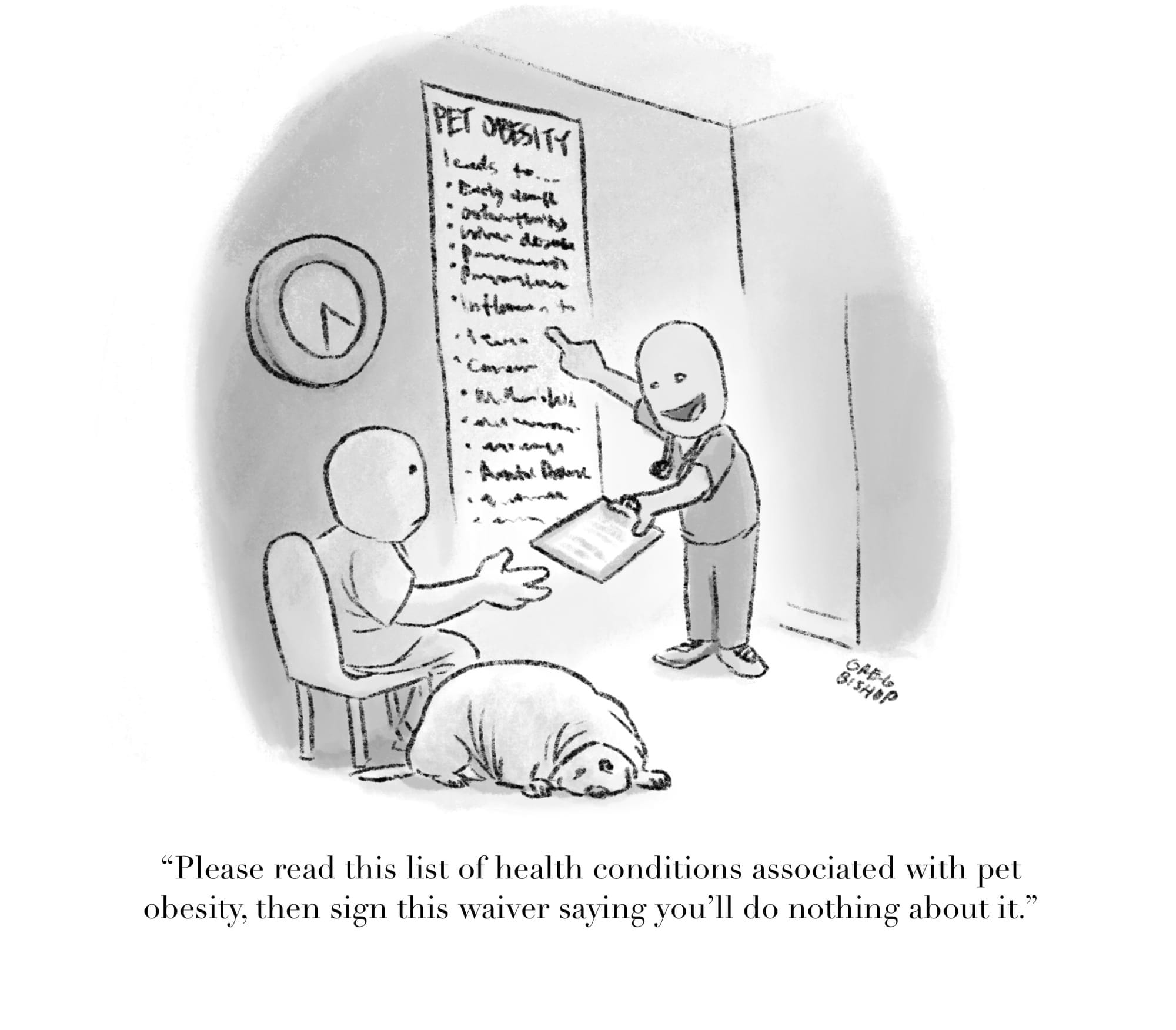
Pet Owners Expect a Range of Options
No one likes a cereal aisle full of just Wheetabix. No matter the presentation, financial constraints, or medical realities of the case, there is almost always more than one option. There's usually at least three, even if one involves the pink stuff. And each one is almost always perfectly fine and valid.
You shouldn't judge whatever someone picks, because you're the one that offered it. Don't give them choices you can't live with. But be as flexible as you can.
I know this might seem hard at first, but I promise once you're out of school for awhile you'll start to magically create additional treatment plans for your patients. Even if they're not strictly evidence based.
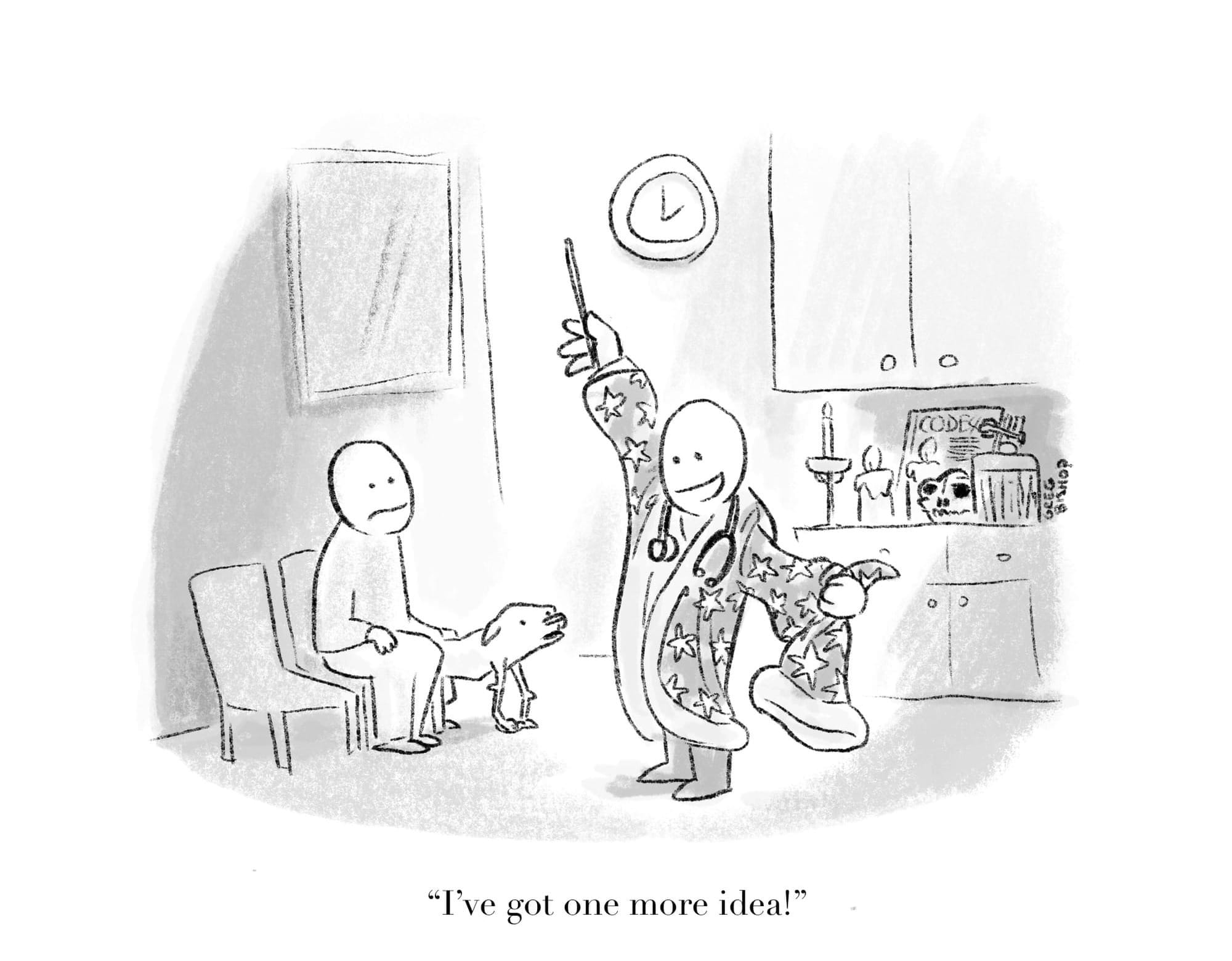
Pet Owners Expect Respect
You really have to understand that you're there to advise the client, not to tell them what to do. Validate their decision.
This one will take some maturity, especially with immature clients. Hey look, I'd love to tell you that this job is easy, but sometimes you gotta be the adult in the room.
Don't necessarily put up with abusive behavior, but if you can handle these people, you can help their pets.
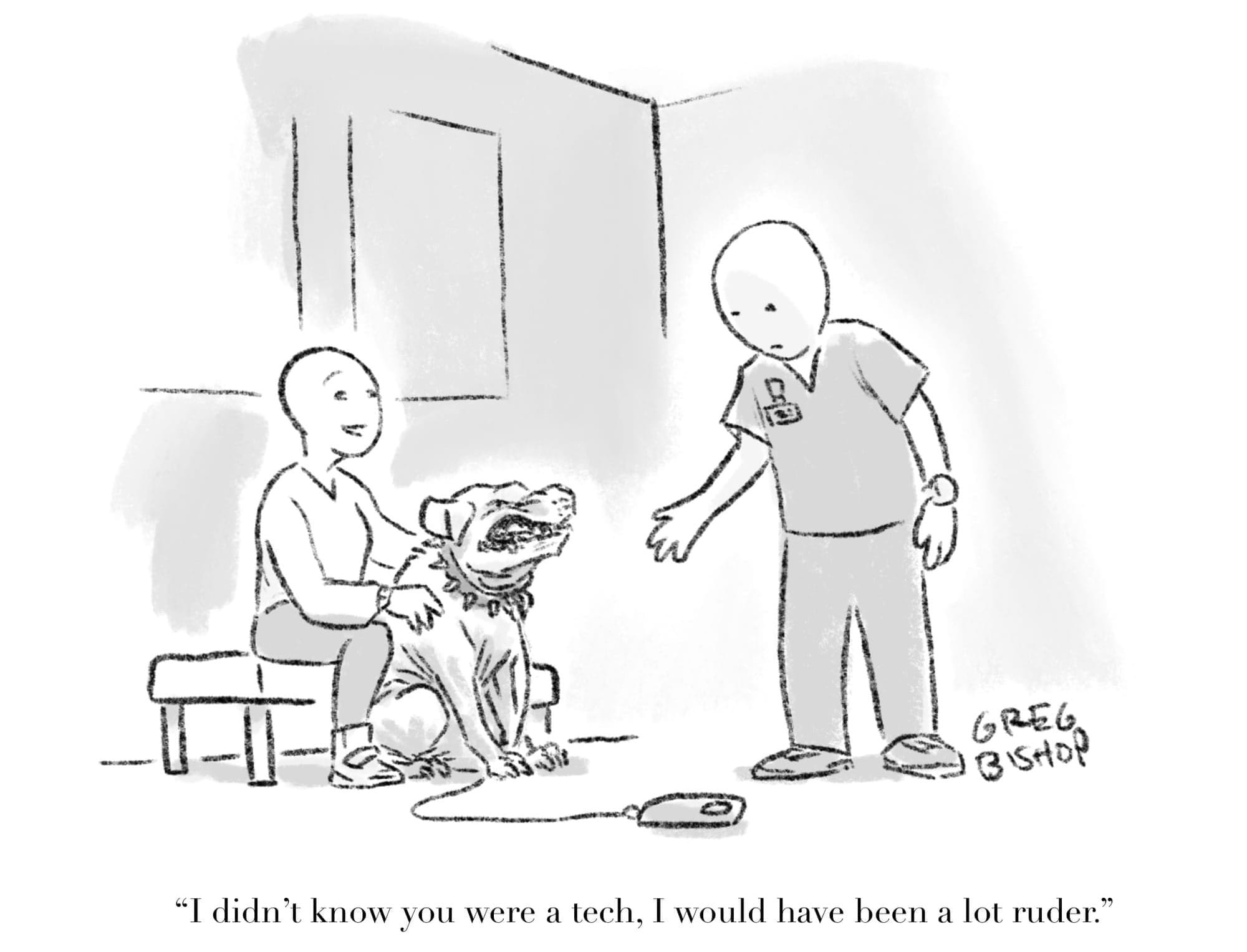
Pet Owners Expect Information to be Explained
It might seem obvious, but make sure to (as much as possible) give your clients a clear diagnosis...
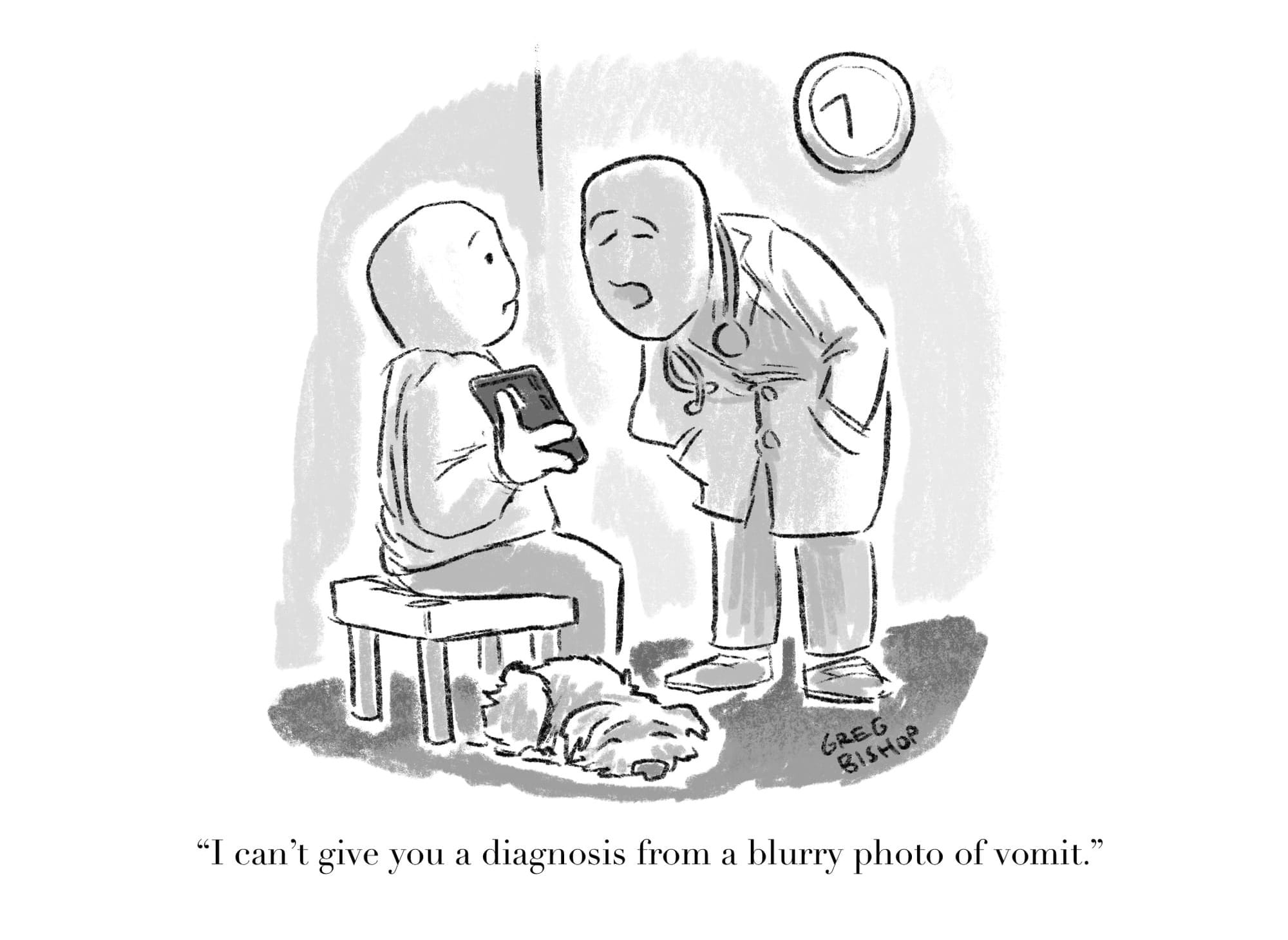
...prognosis...
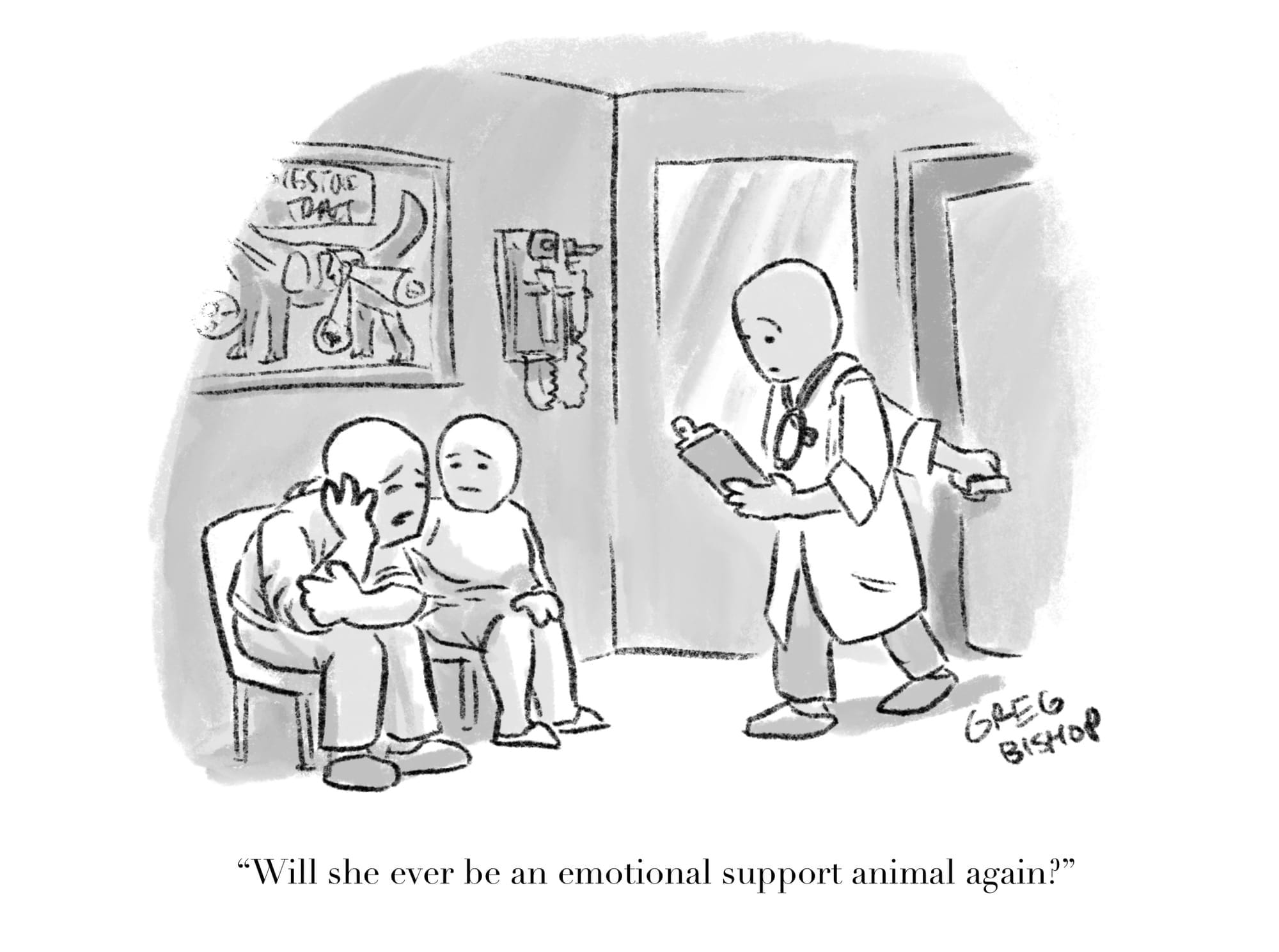
...and understanding of the treatment...
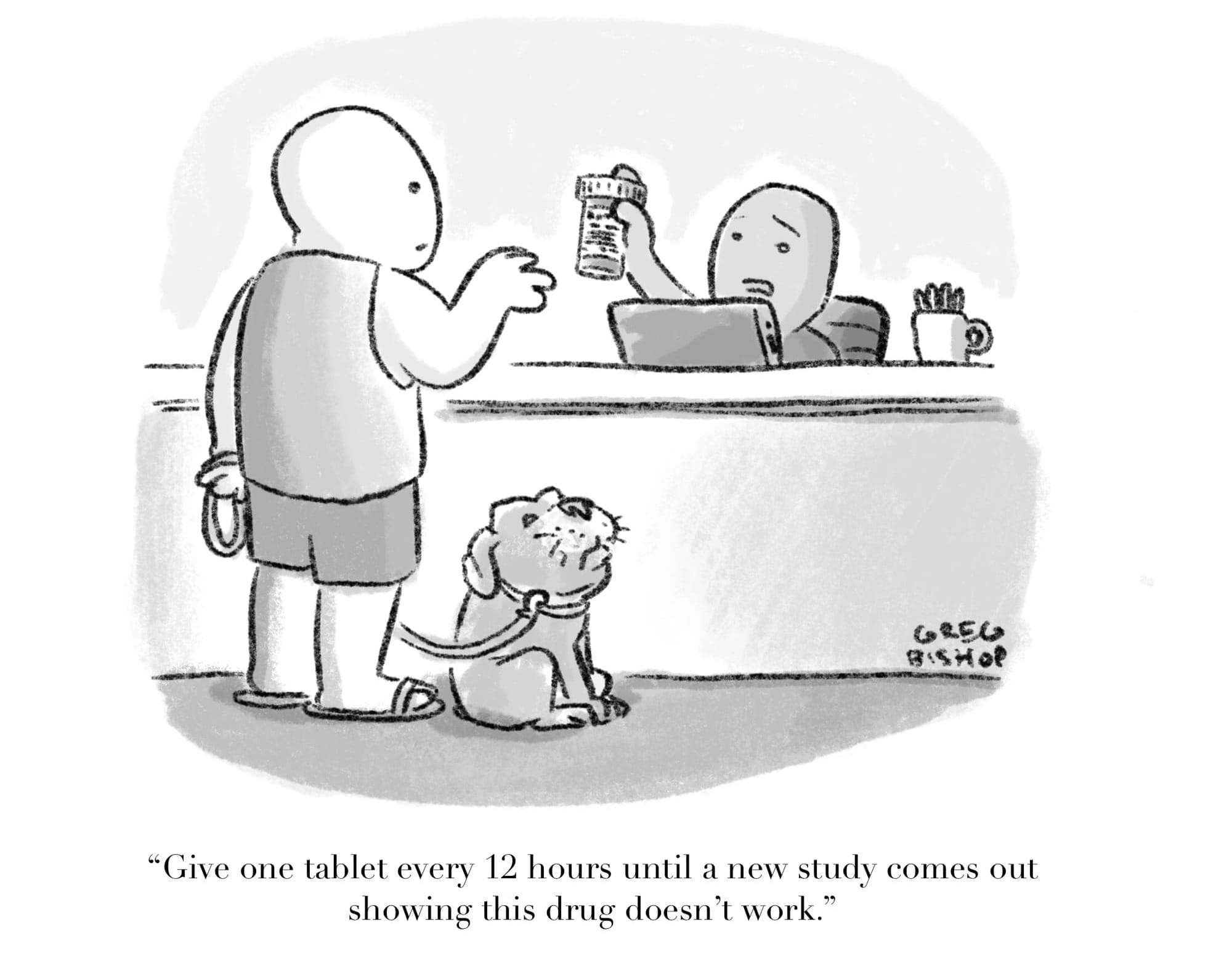
...before they walk out the door.
Of course, our furry little branch of medicine is comically unable to provide precision in these matters most of the time, so use phrases like "my best guess" and "I've got no f—ing idea" wisely.
Oh yeah, and don't forget to give a reasonable guess of how much things will cost. For better or for worse, money is one of the most important things to people, and underestimating how much of it they're about to lose will vaporize any trust you've built up.
Everyone knows we're getting more expensive.
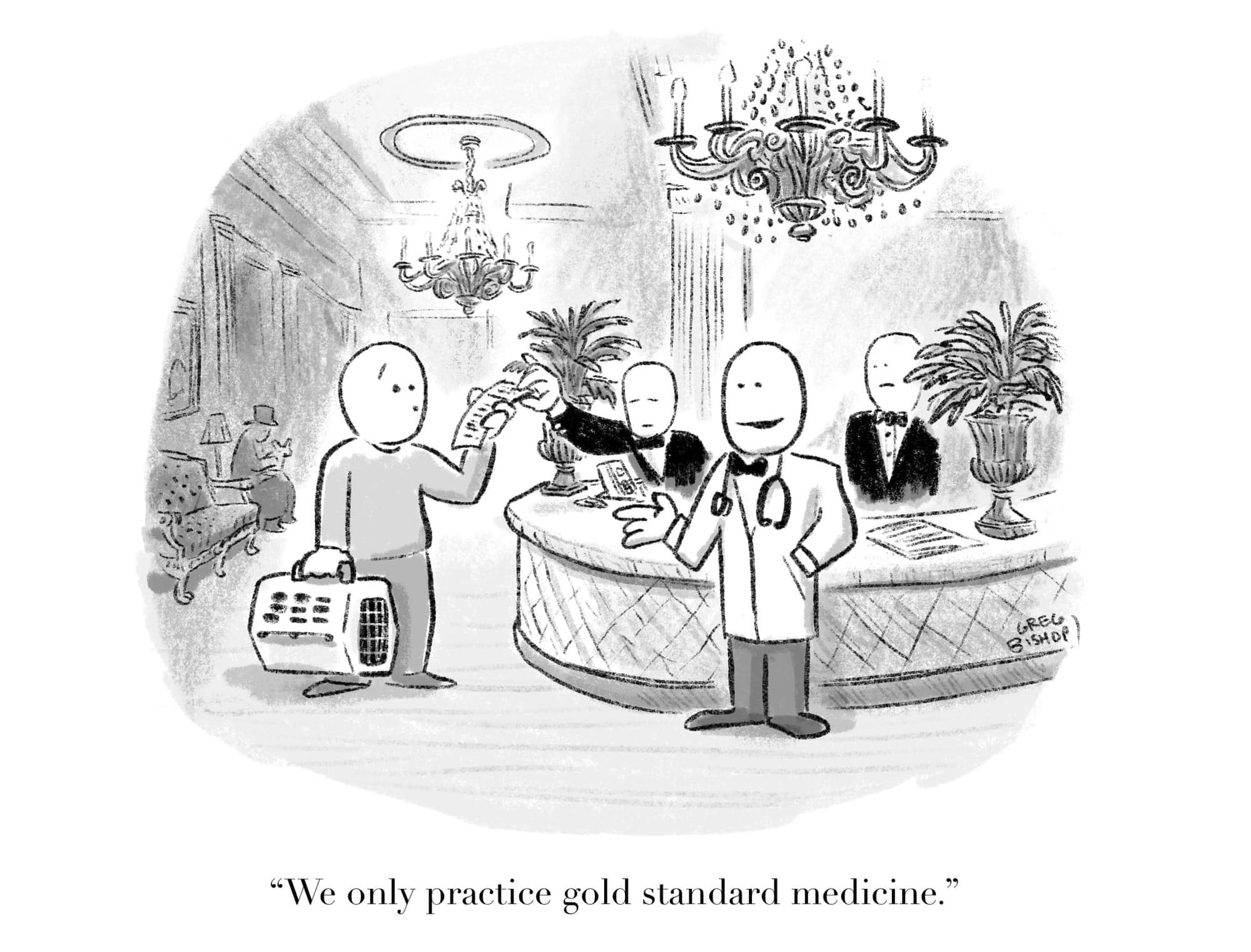
Pet Owners Expect Partnership
You can't be paternalistic anymore. Clients are teammates now. Just because your they're on their phone playing Candy Crush during the most critical few minutes of your hectic workday doesn't mean you can sub them out for someone you prefer.
Good partners listen. It shows respect, care, and attention. It builds trust and collaboration.
Even if it means taking some time to explore the client's personal beliefs, values, preferences, and opinions of extended family members who need to hear all that information again because they really bonded with little Fluffy at Thanksgiving several years ago.
Make sure everyone on the client's side feels like a part of the team.
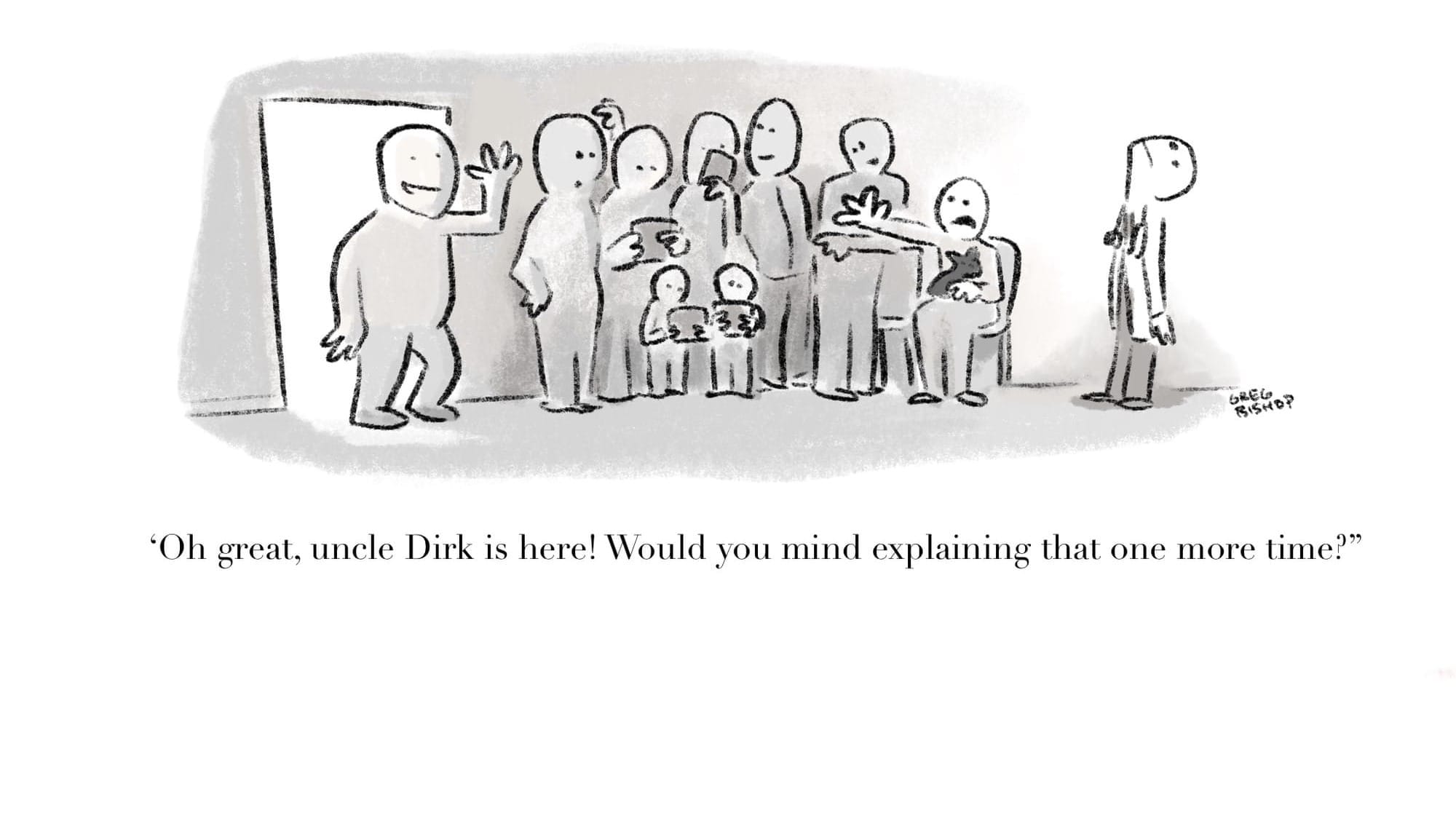
Pet Owners Expect Veterinarians to Ask the Right Questions
You have a large, wide knowledge base full of important details on any one given subject. Your clients don't. They are like helpless puppies waiting for you to syringe feed them the relevant information.
Your language, questions, and tone should match your client's. Otherwise, how the heck are they supposed to have any idea of what you're talking about?
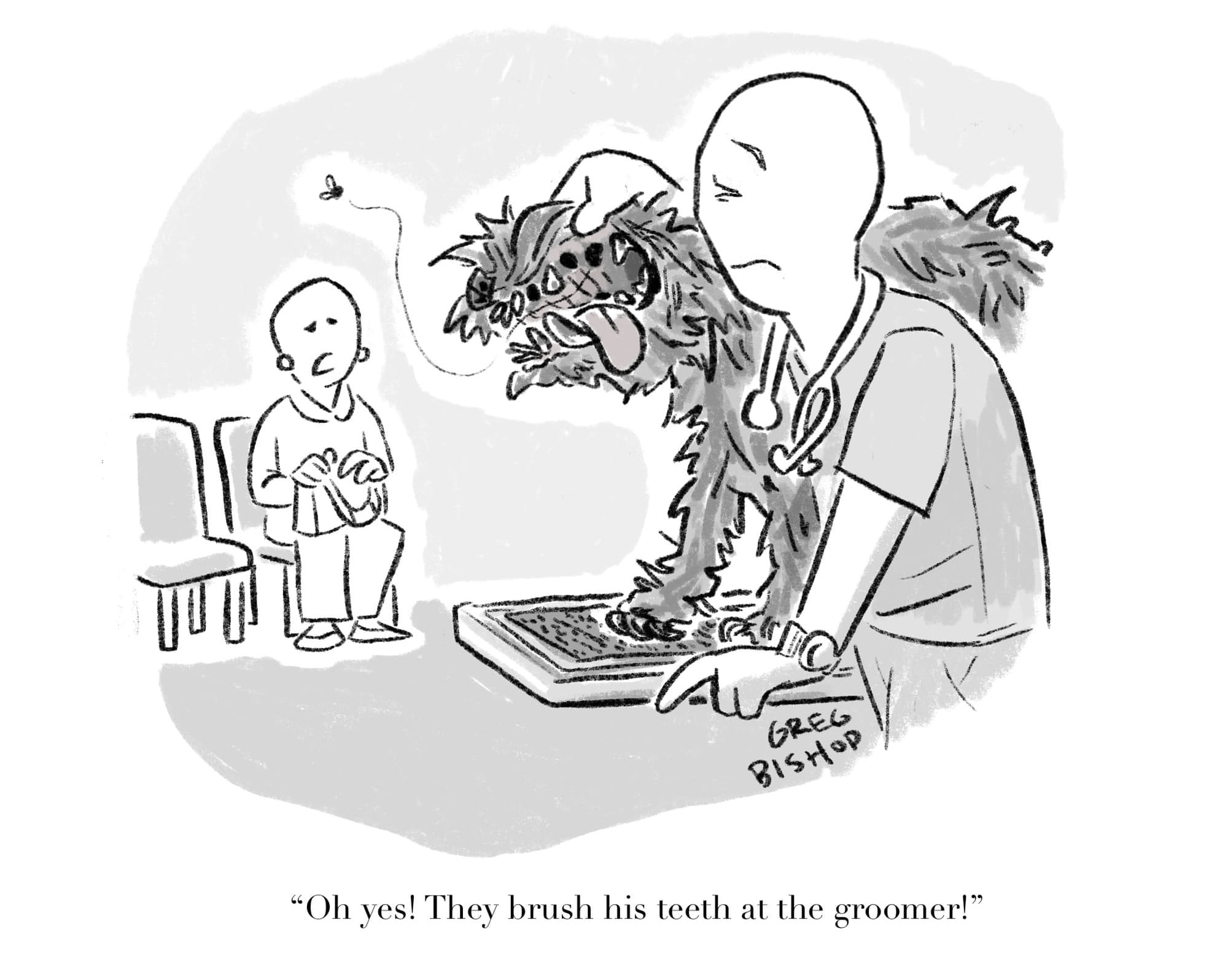
Pet Owners Expect Veterinarians to Use Language Clients Understand
And finally, use words that match your client's language. Simply put, avoid hyperjargonization. Fancy language that no one understands is about as helpful as a parachute made out of fishnet stockings.
Remember that effective client communication is the foundation of veterinary practice. It's the bridge between all of the scientific knowledge and the actual "art" of medicine. By doing the hard work of improving client communication skills, you'll be not only making your clients happier (which improves compliance and benefits animal health), you'll be increasing your own job satisfaction!
It's so important.
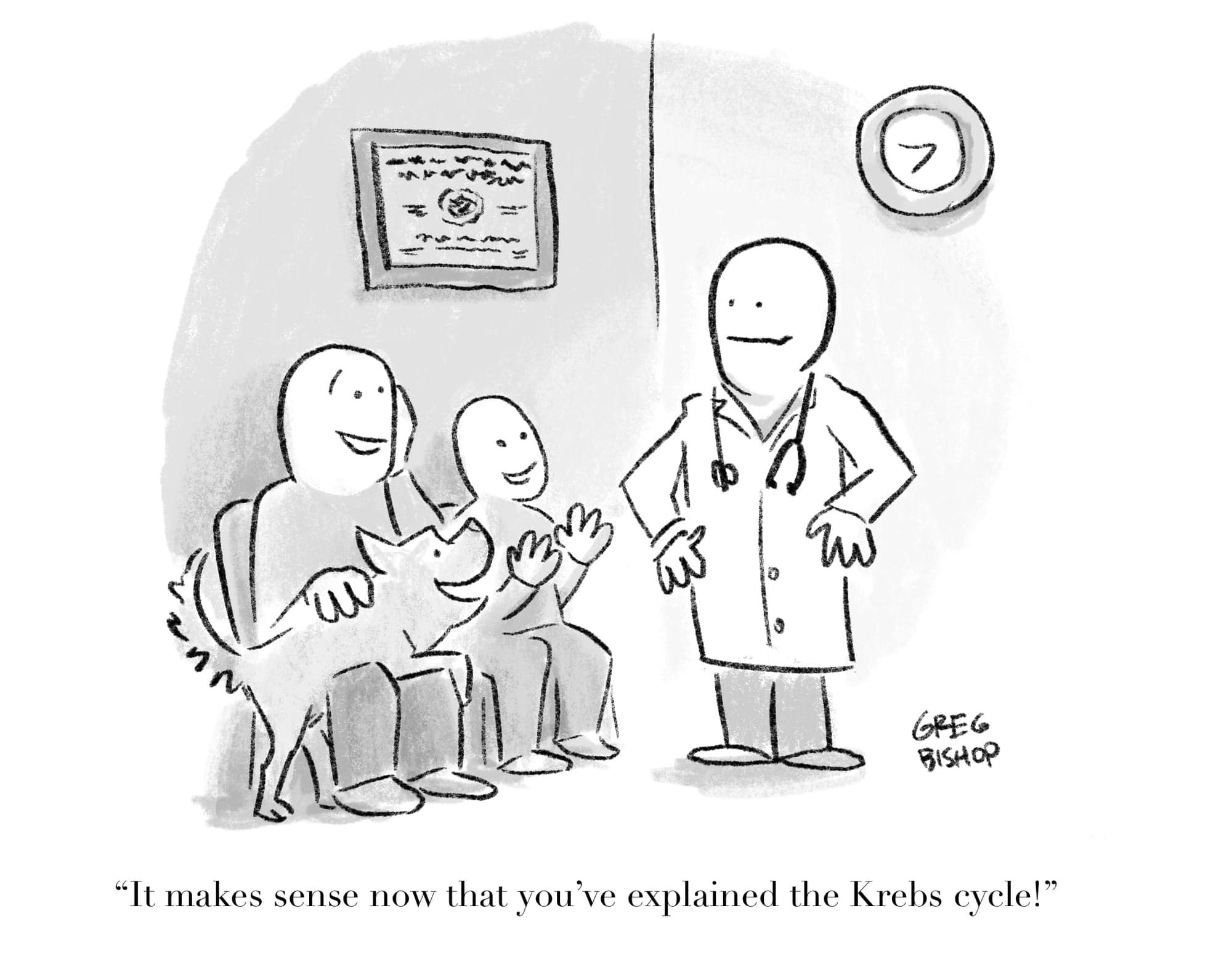
- Reused with permission: Coe, J. B., Adams, C. L., & Bonnett, B. N. (2008). A focus group study of veterinarians' and pet owners' perceptions of veterinarian-client communication in companion animal practice. Journal of the American Veterinary Medical Association, 233(7), 1072-1080, Figure 1, page 1077.



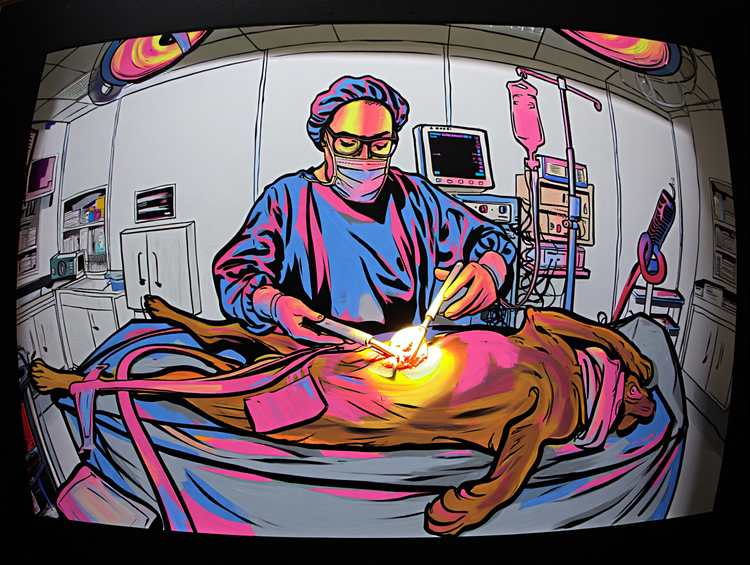
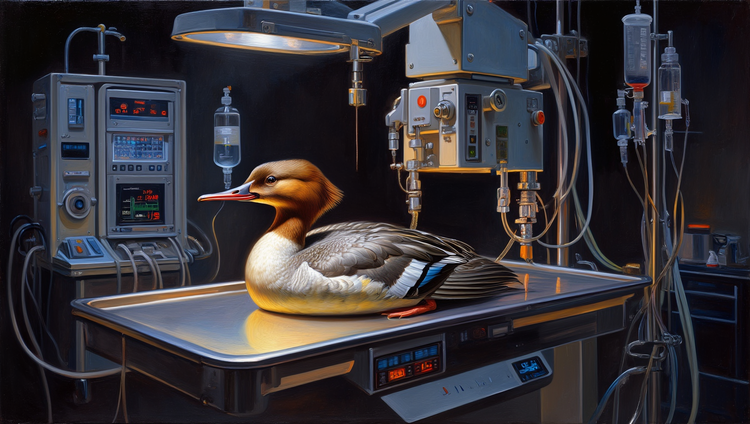
Comments ()